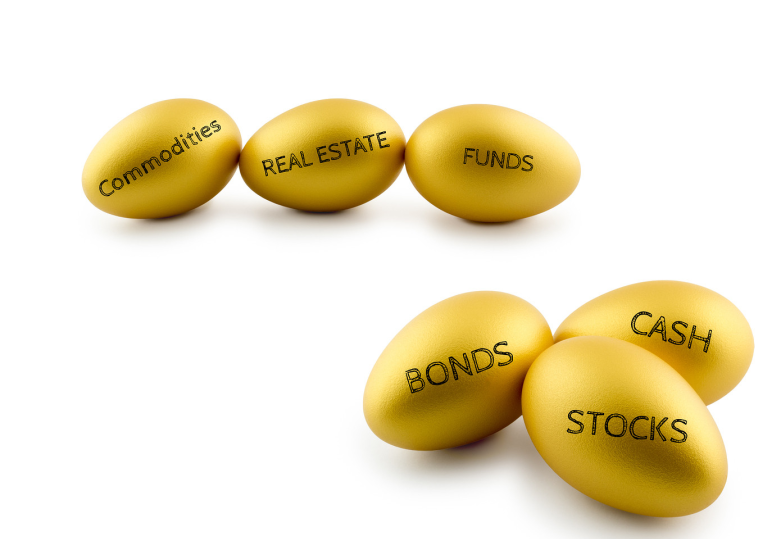Although stocks and bonds are both good investments there are big differences between the two. The old-school rule of thumb was to have a percentage of bonds in your portfolio that corresponds with your age. If you are age 60 then you would have 60% bonds and 40% stocks. This rule has changed dramatically over time, mainly due to the low-interest-rate environment and the poor returns on bonds from 2008 to 2022. As borrowing rates increased dramatically in 2022 and 2023, bonds dropped in price and actually declined in value. Bonds were not as risk-free an investment as some may think for many years, however, now that those borrowing rates are falling should bonds be reintrioduced as a vital part of your portfolio strategy?
Let's first explore the differences between stocks and bonds.
A stock represents part ownership in a publically traded company. It may also be referred to as an equity share. If a company had 1 million outstanding shares and the shares are trading on a stock exchange like the TSX for $10 per share then the company has a market cap (value) of $10 Million.
There are 2 primary ways you can earn money from owning stocks.
Many companies will pay dividends to their shareholders on a quarterly basis. For example, let's take the company Telus, that most of you have heard of. Telus pays an annual dividend of $1.55 per share. If you owned 100 shares (stock) in Telus at the current price of $21(July 2024), you would have an investment worth $2100 and you would receive a dividend payment of $155 per year, paid to you on a quarterly basis ($38.91). Telus is considered a dividend growth stock. The value of the company has increased over time and they have consistently increased its dividend payout to the shareholders over the years.
Another classification and way to earn money from stocks are through growth. Some companies do not pay any dividends, but rather take all of their profits to reinvest in their business in order to grow it and therefore also grow the stock price, also known as market capitalization. Amazon, Facebook, or Google would be an example of this type of company. Apple is in this category, but a few years ago started to pay a small dividend.
Bonds, on the other hand, represent debt.
It's a way for a company to expand its business by borrowing money rather than giving up an equity stake. While dividends are paid from the company's profits and provide no tax deductibility, debt payments are a business expense, therefore, the interest the company pays on this debt is tax-deductible. If a company goes bankrupt the bondholders receive compensation ahead of a stockholder, that's if, there is anything left to distribute.
Types of bonds
A company may issue a bond, which is classified as a corporate bond, for "X" amount of dollars, at a fixed interest rate to be paid back over a 10-30 year period. There are other types of bonds like Government bonds. These are considered safe havens because they are backed by a federal or provincial government. There are also municipal bonds, which are issued by local governments such as cities to fund major infrastructure projects.
Coupon
The interest payment is paid 2 times per year and is called the coupon. If you owned a 10-year Telus bond worth $100,000 and the coupon is 5%, you would receive $2500 2 times per year and 10 years from now, you would get your $100,000 back.
Credit Rating
There are a few different agencies that offer a service of rating the creditworthiness of the bond issuer. No different than you or I going to the bank to get a loan. The rate we receive will depend on how good our credit history is. Tripple AAA is the highest and D is the lowest. (AAA, AA, A, BBB, BB, B,...) Once it gets to BB, a bond is in junk bond territory.
The higher the credit rating of the country, province, city or corporation issuing the bond the lower the interest rate coupon will be because they are considered a safe investment and represent a lower risk to the investor. You can get a higher coupon if you are willing to lend money to a company or government with a lower credit rating. Greek bond interest payouts were in the high teens not that long ago. These days (Sept. 2022) a 10-year government of Canada bond will pay you 3.06% - back in 2019, that same bond paid only 1.24%.
Getting a higher rate of return on your bond investment, will require you to look for bonds with a lower credit rating - in essence, a higher risk of default.
Trading bonds
The bond market is twice as large as the stock market. Bonds can be traded and their PAR value will change as interest rates rise and fall. As I mentioned before, imagine you have a bond for $100,000 that pays a 5% annual interest payment and will mature in 10 years. If interest rates go down, someone else may only be able to get a new 10-year bond from Telus with a 4% interest payment. This will make your bond more attractive and if you wanted to sell it you could sell it at a premium. Reversely, if interest rates go up, your bond becomes less attractive, and if you needed to sell it you would have to sell it at a discount.
Based on the movement of interest rates, if rates are steady, a bond will trade at PAR. If interest rates go down, the value of your bond will increase, in which case it could be sold at a premium. If interest rates go up, your bond will need to be discounted and sold at a lower price. What is happening right now in 2022 is that interest rates are rising rapidly to fight inflation and the fallout is bonds are being sold at a significant discount. This has created an incredible drag on your portfolio, especially if it consists of 40-60% of bonds.
Conclusion
Because interest rates had been low for so long up to 2022, bonds had not been as attractive as an investment. You had to buy bonds with lower credit ratings, therefore taking on more risk, to get a higher yield. Although the stock market is volatile, it is still the best place to grow wealth over the long run. Bonds are not necessarily the alternative to stocks anymore and have their own inherent risk, however, now that interest rates are on the decline - in the summer of 2024 - bonds are again back in favour and should be a part of an investor's portfolio. How attrative bonds will be is determined by how quickly, and by how much, central banks reduce their prime lending rates.
Bonds have traditionally been associated with income-seeking investors. At one time a retiree could purchase a 20-year bond that pays 5% semi-annually and didn't have too much to worry about for 20 years. This isn't the case anymore. Bonds are not as great a tax-efficient investment tool for non-registered accounts because the interest income is 100% taxable at your marginal tax rate. It is best to keep bonds within your registered accounts, like TFSA, RRSP, and RESPs.
Portfolio construction has changed over the past 16 years. The bond/stock mix according to your age was often not appropriate. Another strategy is to have numerous asset classes mixed between the different types of bonds, stocks from different geographic locations and sectors, private equity, mortgages, public & private debt from different geographic locations, preferred shares, annuities, and more - what this strategy is doing is reducing risk and volatility through broader-based diversification based on economic conditions around the world, not just here in Canada.
What's the best investment strategy for you?
It depends on factors like your time horizon, risk tolerance, age, income needs, marginal tax rate, the type of accounts and how much money you have. We would be happy to review your current investment portfolio and strategy to make sure you are on track to meet your retirement income needs.
Additional reading on Staying Disciplined as an investor. Risks of Bonds.
Are you retiring soon?
We specialize in working with clients 55+ who want to draw down their assets in the most tax-efficient and sustainable manner.
Learn more about our services and book an appointment.
Retirement Income, Investment, & Tax Planners,
Willis J Langford CFP
Nancy Langford CRS







